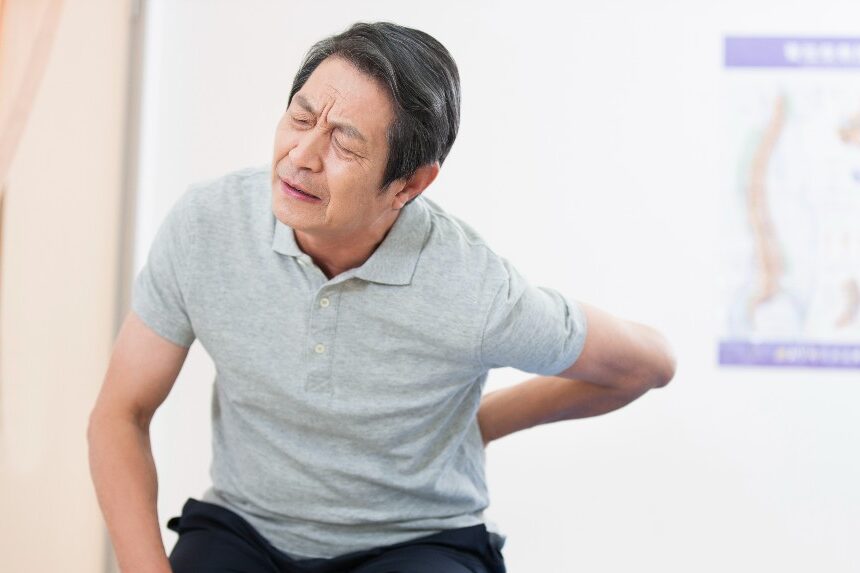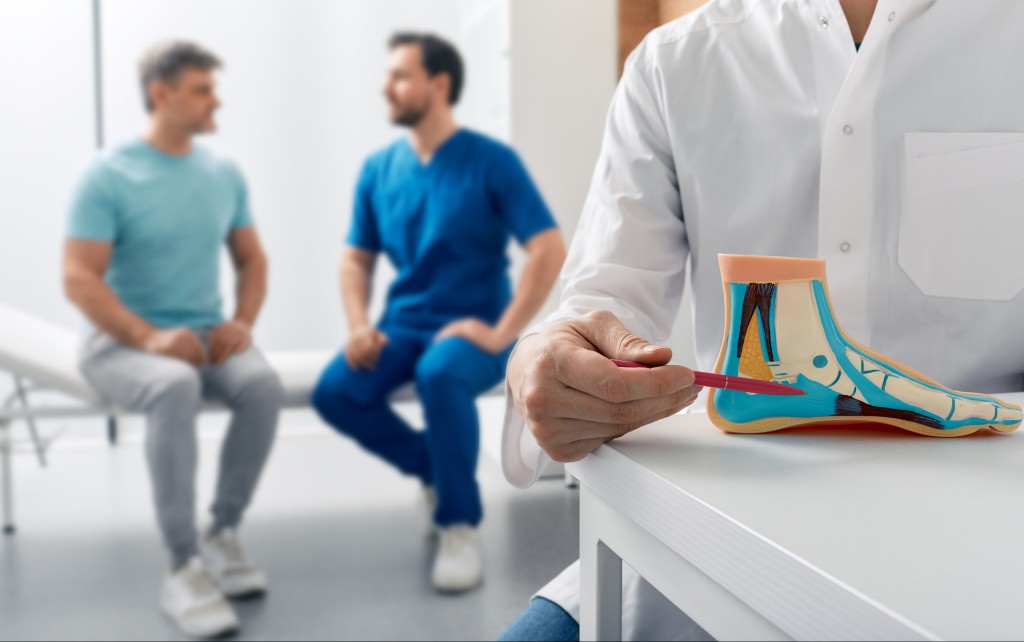Heel pain is a prevalent issue that affects many individuals at some point in their lives.In fact, nearly 10% of Americans will experience heel pain caused by conditions like plantar fasciitis. Finding effective treatments can be challenging, as traditional options may not always provide the desired relief. Fortunately, emerging research suggests that shockwave therapy could be a promising solution for managing heel pain. This non-invasive therapy offers numerous benefits without the high costs or potential side effects associated with surgery or prescription drugs.
In this blog post, we will explore:
- Causes of Heel Pain
- Benefits of Shockwave Therapy for Heel Pain
- How Shockwave Therapy Works
- Understanding Shockwaves
- Applying Shockwaves for Heel Pain Relief
- Types of Shockwave Therapy
- Ideal Candidates for Shockwave Therapy
- The Shockwave Therapy Procedure
- Potential Side Effects of Shockwave Therapy
- The Best Shockwave Therapy for Heel Pain
Causes of Heel Pain

Heel pain can stem from various factors, ranging from biomechanical issues to underlying medical conditions. Here are some common causes of heel pain:
- Plantar Fasciitis: This condition occurs when the plantar fascia, a band of tissue connecting the heel bone to the toes, becomes inflamed. It often leads to intense pain in the heel area, especially upon taking the first steps in the morning.
- Achilles Tendinitis: Overuse or strain of the Achilles tendon, which connects the calf muscles to the heel bone, can cause heel pain and stiffness.
- Heel Spurs: These bony growths develop on the underside of the heel bone and are often associated with plantar fasciitis. They can cause significant discomfort and pain.
- Stress Fractures: Tiny cracks in the heel bone can result from repetitive stress or overuse, leading to heel pain.
- Bursitis: Inflammation of the bursae, small fluid-filled sacs that cushion the joints, can occur in the heel area and cause pain.
It’s important to note that these are just some of the most common causes of heel pain. If you are experiencing knee pain, you can learn if your condition is suitable for treatment and try shockwave therapy with our New Patient Special.
Benefits of Shockwave Therapy for Heel Pain
Shockwave therapy offers several advantages as a non-invasive treatment option for heel pain. By utilizing high-energy shockwaves, this therapy stimulates the body’s natural healing process. Here are some benefits of shockwave therapy for heel pain:
Accelerated Healing: Shockwave therapy promotes the healing of damaged tissues, such as the plantar fascia or Achilles tendon, by stimulating blood flow and cellular repair. This can lead to faster recovery for individuals experiencing chronic or recurrent heel pain.
Reduced Reliance on Medications: Traditional treatments for heel pain often involve medications, which can have unwanted side effects. Shockwave therapy provides a medication-free alternative, reducing the need for pain medication and offering a more natural approach to healing.
Improved Quality of Life: Heel pain can significantly impact daily activities and quality of life. Shockwave therapy helps reduce pain and enhance mobility, allowing individuals to regain their normal activities and improve their overall quality of life.
Non-Invasive and Safe: Unlike invasive treatments, such as surgery, shockwave therapy is non-invasive and safe. It does not require incisions or anesthesia and carries a low risk of complications. This makes it an attractive option for those seeking a minimally invasive approach to heel pain relief.
Considering these benefits, shockwave therapy emerges as a promising treatment option for individuals struggling with heel pain.
How Shockwave Therapy Works
Shockwave therapy is a non-invasive procedure that utilizes high-energy sound waves to stimulate healing in the affected area. Let’s explore how this therapy works:
Understanding Shockwaves
Shockwaves are rapid sound pulses consisting of high-pressure peaks followed by lower-pressure depressions. We encounter shockwaves in various everyday occurrences, such as sonic booms, blasts, thunderbolts, and seismic activities. These waves are integral to our understanding of sound and pressure dynamics.
Applying Shockwaves for Heel Pain Relief
During shockwave therapy for heel pain, a specialized device delivers shockwaves to the affected area. These shockwaves have the ability to stimulate cellular healing, enhance blood circulation, and activate the body’s intrinsic healing mechanisms. By targeting the source of heel pain, shockwave therapy aims to promote tissue recovery and alleviate discomfort.
Types of Shockwave Therapy
Several types of shockwave therapy exist, each with its own characteristics and applications. The most commonly used forms include radial shockwave therapy (RSWT), focused shockwave therapy (FSWT), and acoustic wave therapy (AWT). broad-focused shockwave therapy is also gaining recognition as an effective treatment for heel pain.
Radial Shockwave Therapy employs a manual device to deliver pressure waves to the skin’s surface. It is commonly used to address conditions like plantar fasciitis, Achilles tendinopathy, and tennis elbow. However, for deeper tissue injuries, its effectiveness may be limited, requiring multiple sessions for optimal results.
Focused Shockwave Therapy utilizes a device that directs high-intensity shockwaves directly to the affected area. This therapy is often employed for chronic conditions such as plantar fasciitis and slow-healing bone fractures. Some patients may find the treatment slightly uncomfortable, and adjustments to the intensity may be necessary based on individual preferences.
Acoustic Wave Therapy involves the use of a device that delivers low-intensity shockwaves to the affected area. This therapy is commonly used to improve blood flow, relieve pain and inflammation, and promote tissue recovery. It has been utilized for issues like erectile dysfunction and cellulite. However, low-powered shockwaves may not effectively address certain conditions.
broad-focused Shockwave Therapy releases high-intensity shockwaves that penetrate a broader and deeper tissue region (7cm x 12cm) compared to focused shockwaves (1cm x 12cm) or radial waves (2cm x 2cm). SoftWave for foot pain is the only available form of broad-focused shockwave treatment in the United States. broad-focused shockwaves can effectively treat the same conditions as traditional focused shockwave therapy while providing superior relief for severe joint and muscle issues like heel, ankle, or lower back pain. Moreover, broad-focused shockwave therapy may require fewer sessions compared to radial or focused shockwave therapies.
Ideal Candidates for Shockwave Therapy

Certain factors make individuals suitable candidates for shockwave therapy, including:
- Those experiencing chronic heel pain
- Those who have had limited success with other treatments
- Those seeking non-invasive treatment options
Individuals with chronic heel pain resulting from conditions like plantar fasciitis or Achilles tendinitis may find shockwave therapy beneficial. For those who have tried various conservative treatment options without significant pain relief, shockwave therapy offers a promising alternative.
Additionally, individuals who prefer non-invasive treatments will find shockwave therapy appealing. This approach does not involve surgery, incisions, or anesthesia, making it a desirable option for those wishing to avoid more invasive procedures for heel pain.
The Shockwave Therapy Procedure
Understanding what to expect during a shockwave therapy session is crucial for individuals considering this treatment for heel pain. Here is a general overview of the procedure:
- Preparation: The affected area on the heel is prepared by applying an ultrasound gel. The shockwave device is then gently positioned on the skin.
- During the Treatment: As shockwaves are delivered to the affected area, patients may experience a gentle tapping or throbbing sensation. Some individuals may feel mild discomfort or pain, but anesthesia or numbing solutions are typically unnecessary. Open communication with the healthcare provider can help pinpoint treatment focus areas and monitor progress.
- Post-Treatment: A shockwave therapy session typically lasts around 10-15 minutes. Afterward, patients can generally resume their regular activities without a mandatory rest period for recovery. However, some physicians may recommend avoiding high-impact activities or intense physical workouts for 24-48 hours following the session.
Potential Side Effects of Shockwave Therapy
As with any medical procedure, there is a slight risk of side effects associated with shockwave therapy. Some commonly reported side effects for heel pain treatment include:
- Temporary pain or discomfort during or after the session
- Mild swelling or bruising in the treated area
- Redness or skin irritation
- Temporary numbness or tingling sensation
These side effects are typically mild and transient, allowing most patients to resume their normal activities immediately after the procedure.
SoftWave therapy, an FDA-cleared treatment for heel pain, is known for its safety and effectiveness. Side effects from SoftWave therapy are minimal and non-restrictive. It does not typically cause bruising or swelling, and any minor redness or soreness typically subsides within one to two days.
The Best Shockwave Therapy for Heel Pain
Are you looking for safe, reliable, and effective relief from heel pain?
SoftWave therapy is FDA-cleared, patented, and nationally recognized for its leading tissue regeneration technology. Unlike other types of high-energy shockwave treatments, SoftWave is the only shockwave therapy on the market that uses true broad-focused shock waves that treat larger and deeper areas of tissue.
Thousands of patient’s have experienced the benefits of SoftWave for heel pain, including:
- Little to no side effects
- Short treatment time
- Quick recovery
- Long-lasting results
Find a SoftWave Therapy provider near you or learn more about SoftWave and whether or not you’re eligible for full treatment today!
New Patient Special
Try SoftWave for just $69 at a clinic near you and learn if you’re a candidate for full treatment




